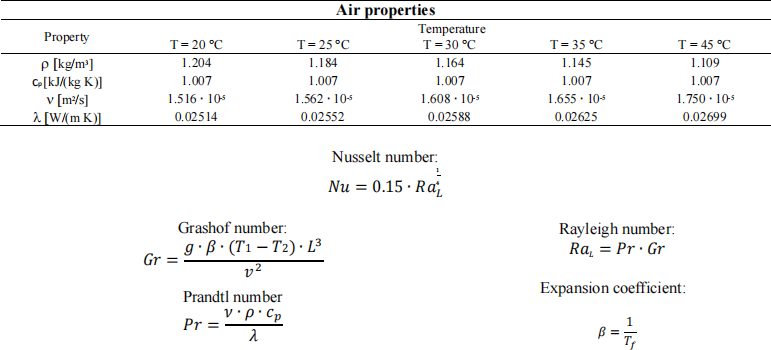Building physics Fourth call – 09/06/23 – exercises
Hello, dear friend, you can consult us at any time if you have any questions, add WeChat: daixieit
Building physics
Fourth call – 09/06/23 – exercises
Exercise 1 (2 pts)
Consider a closed system used to measure the heat capacity of a liquid. The system contains 0.1 liters of a liquid with a density of 1200 kg/m3. Calculate the specific heat of the liquid knowing that the temperature increases from 20 to 30 °C when 10 kJ of heat are provided to the system and 4 kJ are lost to the environment due to non-ideal insulation. [5 kJ/(kg K)]
Exercise 2 (2 pts)
2 moles of a monoatomic ideal gas (MM = 4 g/mol) go through an adiabatic transformation where 5000 J of work are provided to the system. Knowing that the initial temperature and pressure are 200 °C and 1 bar, respectively, determine the final temperature and pressure. [673.7 K; 2.418 bar]
Exercise 3 (2 pts)
100 kg/s of refrigerant R- 134A enter a compressor at a temperature of - 18 °C and vapor quality equal to 1. The outlet pressure is equal to 2 bar, and the isentropic efficiency is 98 %. Calculate the power consumption. [661 kW]
Exercise 4 (2 pts)
During summer, an air-conditioning system takes a mass flowrate of 3 kg/s of air at 35 °C and 70 % of relative humidity and it’s cooled down and dehumidified until 22 °C. Determine the amount of condensate produced and the cooling power. [25 g/s; 106 kW]
Exercise 5 (2 pts)
A heat pump operates between the temperatures of 30 °C and 90 °C, with a COP equal to 60 % of the COP of a Carnot Cycle operating between the same temperatures. If the heat pump delivers 1 MW to the hot sink, please determine the generated entropy per unit of time due to the heat pump’s operation. [363 W/K]
Exercise 6 (2 pts)
It is required that a wall with transmittance of 0.9 W/(m2 K) is insulated to meet the requirements about buildings efficiency. The target transmittance is 0.25 W/(m2 K) and, for practical reasons, the insulation layer cannot exceed 10 cm. Calculate the maximum conductivity which can be accepted when selecting the insultation material. [0.0346 W/(m K)]
Exercise 7 (2 pts)
An underfloor with a heating system is kept at a temperature of 35 °C to heat up a room where the air is at 22 °C. Using the proposed correlation below, determine the heat transfer coefficient between the horizontal floor and the air and the heating power provided by the floor per m2. Choose the correct air properties and consider a characteristic length of 1 m. [4.1 W/(m2 K); 53.6 W/m2)]

Exercise 8 (2 pts)
Calculate the power exchanged by radiation by a radiator with a surface temperature of 60 °C and an area of 1 m2 for each face. Assume that one face exchanges heat with the room (mean radiant temperature of 19 °C) and one face with the wall (temperature of 30 °C). Consider an emissivity of 0.9 for the radiator and make the necessary assumption to perform the calculation. [545 W]
SECOND PART
Exercise (8 pts)
Consider a double-glazed window. The frame has a thermal resistance of 0.35 (m2 K)/W, while the glazed section is made of two panels of glass with a thickness of 6 mm and a thermal conductivity of 1 W/(m K). The cavity between the two panels is 16 mm thick and is filled with Argon (λ = 0.018), a gas which can be considered still. The thermal bridge between glass and frame is 0.02 W/(m K), the frontal dimension of the glass are 0.6 x 1.2 m and the frame has a width around the glass of 9 cm. Assume surface heat transfer coefficient equal to 25 W/(m2 K) for the outdoor surface and 8 W/(m2 K) for the indoor surface.
Determine:
1. The transmittance of the glass assuming that the radiative heat transfer coefficient in the cavity is 0.25 W/(m2 K)
2. The transmittance of the window
3. The surface temperature of the frame, when the indoor temperature is 20 °C and the outdoor temperature is 0 °C
4. The maximum relative humidity which can be accepted in the indoor environment to avoid surface condensation on the window.
[1.11 W/(m2 K); 1.45 W/(m2 K); 15.15 °C; 73%]
2024-01-08